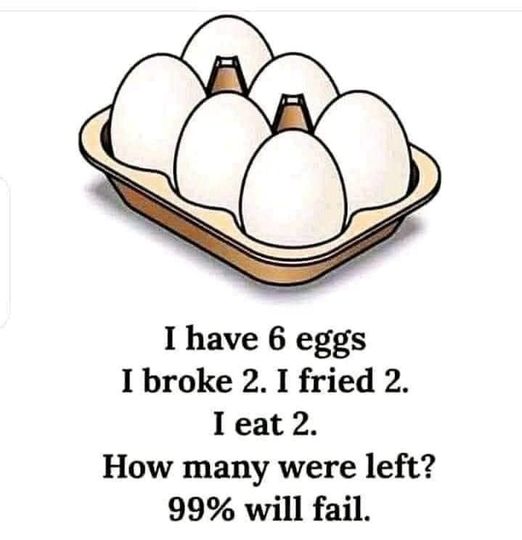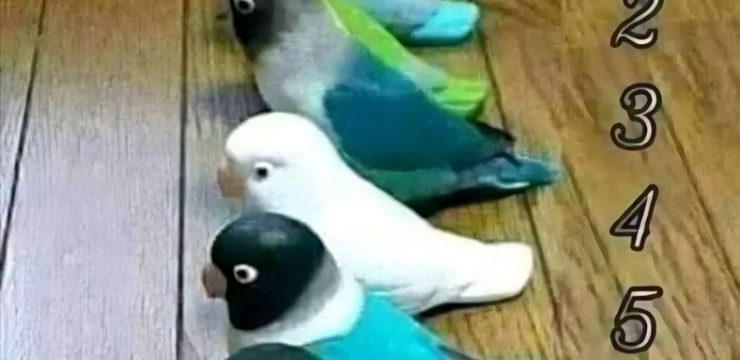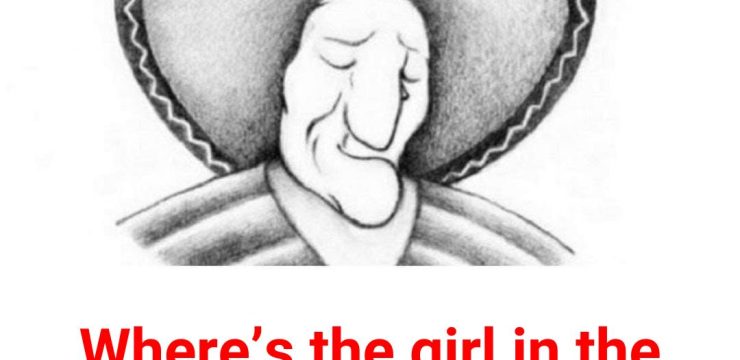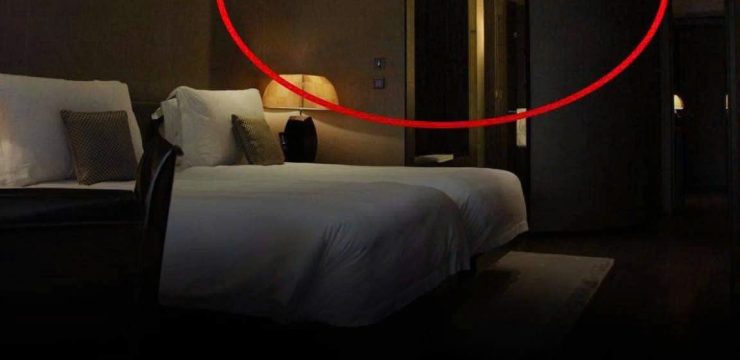When you first hear this seemingly simple riddle, you might think, “What’s the catch?” But as you start to unravel the puzzle, you realize it’s not as straightforward as it seems. Let’s dive deep into this intriguing question and find out the correct answer. Spoiler alert: Most people get it wrong on the first try!

Understanding the Riddle: A First Look
The riddle goes like this: “I have 6 eggs. I broke 2, I fried 2, I ate 2. How many were left?” On the surface, it appears to be a basic arithmetic problem, but there’s more than meets the eye.
Breaking Down the Riddle: What’s the First Thought?
When people first encounter this riddle, they typically start with simple math. They think:
- 6 eggs – 2 broken = 4 eggs
- 4 eggs – 2 fried = 2 eggs
- 2 eggs – 2 eaten = 0 eggs
So, the conclusion most people jump to is that there are no eggs left. But is that really the correct answer? Let’s examine it more closely.
The Importance of Interpretation: A Deeper Dive
What many fail to consider is the order of actions and the fact that these actions might involve the same eggs. Let’s break down each part of the riddle step by step.
Step 1: Breaking 2 Eggs
When you break 2 eggs, you’re preparing them for cooking. But just because they’re broken doesn’t mean they’re no longer eggs. They’re still there, just in a different form.
Step 2: Frying 2 Eggs
Next, you fry 2 eggs. Here’s where the trick comes in. Did you fry 2 new eggs, or did you fry the ones you just broke? The riddle doesn’t specify. It’s entirely possible that the 2 eggs you fried are the same 2 eggs you broke.
Step 3: Eating 2 Eggs
Finally, you eat 2 eggs. Again, the riddle doesn’t clarify whether these are new eggs or the ones you’ve already fried. If we assume you ate the fried eggs, those are the same eggs you broke earlier.
The Correct Answer: How Many Eggs Were Left?
Now that we’ve dissected the riddle, let’s answer the question: How many eggs were left?
The answer is 4 eggs.
Here’s why:
- You started with 6 eggs.
- You broke 2 eggs, but they’re still present, just in a different form.
- You fried those 2 broken eggs, so they’re still accounted for.
- You ate the 2 fried eggs, which means you’ve consumed 2 eggs in total.
The remaining 4 eggs were untouched and are still whole. So, despite all the cooking and eating, you’re left with 4 eggs.
Why Most People Get It Wrong: Common Misconceptions
Misinterpretation of Actions
The main reason this riddle trips people up is due to the assumption that each action (breaking, frying, eating) applies to different eggs. This isn’t explicitly stated, but our brains often jump to that conclusion.
Overthinking the Problem
Another reason people struggle is overthinking. The riddle seems more complex than it is, leading people to doubt their initial answers and overcomplicate their reasoning.
The Influence of Assumptions
We all carry assumptions based on how we’re used to thinking about problems. In this case, the assumption is that breaking, frying, and eating involve separate eggs each time. This assumption is what leads to incorrect answers.
How to Approach Similar Riddles in the Future
Step Back and Simplify
When faced with a riddle like this, take a step back and look at the simplest possible explanation. Often, the correct answer is the one that doesn’t require you to make extra assumptions.
Consider All Possibilities
Don’t immediately latch onto the first solution that comes to mind. Consider other possibilities, such as the idea that the same eggs could be involved in multiple steps.
Practice Makes Perfect
Riddles and puzzles like this are a great way to sharpen your problem-solving skills. The more you practice, the better you’ll get at spotting the tricks and traps that often accompany these challenges.
Conclusion: The Power of Riddles and Critical Thinking
This egg riddle is a fantastic example of how our minds can be tricked by simple language and assumptions. By breaking down the problem and considering all possibilities, we’ve shown that the correct answer is 4 eggs left.
Riddles like these remind us that critical thinking and careful interpretation are key to solving problems effectively. So, the next time you’re faced with a tricky question, remember to take your time, think critically, and don’t be afraid to question your assumptions. You might just crack the case!





